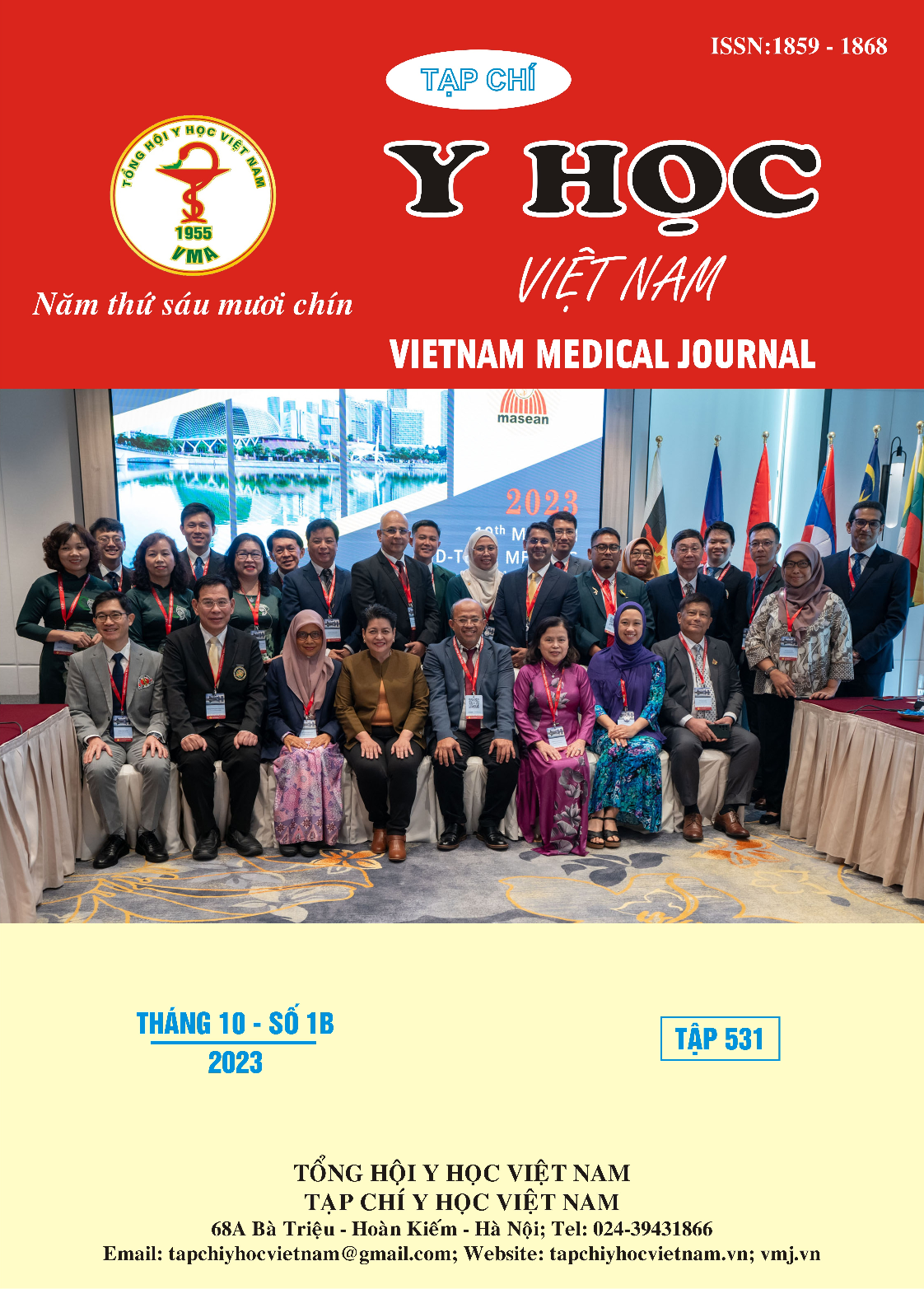OBSERVATIONS ON VARIOUS MEASUREMENTS IN LATERAL CEPHALOMETRIC ANALYSIS IN PATIENTS AGED 18-35 WITH GUMMY SMILE
Main Article Content
Abstract
Objective: This study aims to describe the characteristics of patients with gummy smile through lateral cephalometric analysis. Methods: A cross-sectional study was conducted on 40 patients aged 18-35 who presented for maxillofacial and dental examination. Results: Among the 40 subjects (5 males and 35 females), 21 individuals (53%) exhibited Class II skeletal relationships according to Steiner's classification, 13 individuals (32%) displayed Class I relationships, and 6 individuals (15%) presented with Class III relationships. In comparison to the mean values from previous studies on craniofacial characteristics of Vietnamese and Asian individuals with harmonious facial features and no gummy smile, patients with gummy smile exhibited an increase of 2.41 mm anterior maxillary height. Additionally, the PP/FH angle, PP/SN angle, and facial convexity angle increased, while the Jarabak ratio decreased. These differences held statistically significance for both Class I and Class II skeletal relationship groups. Furthermore. the mean values of the upper incisor angles significantly increased, while the nasolabial angle, the angle of upper lip to FH plane exhibited statistically significant decreases. However, upper lip height did not show statistically significant differences. Conclusion: Distinctive features observed in patients with gummy include Class II skeletal relationships, a convex facial profile, increased anterior maxillary height, particularly in the vertical dimension, clockwise rotation of the maxilla, retruded mandible, labially inclined upper incisors, increased overbite, labially upper lip inclination, and normal upper lip length. It is evident that the absolute upper lip length does not contribute to the presence of gummy smiles. Therefore, it is crucial to thoroughly evaluate the severity of the gummy smile to diagnose all causes, which are often combined, and then develop appropriate treatment approaches.
Article Details
References
2. Pavone AF, Ghassemian M, Verardi S. Gummy Smile and Short Tooth Syndrome--Part 1: Etiopathogenesis, Classification, and Diagnostic Guidelines. Compend Contin Educ Dent. 2016;37(2):102-7.
3. Ines D. Orthodontics Gummy Smile. 2017;
4. Hương ĐQ. Cười hở lợi và một số yếu tố liên quan ở người Việt độ tuổi 18 - 25. 2017;
5. Anh TT. Nhận xét mỗi tương quan xương-răng trên phim sọ nghiêng từ xa của một nhóm người Việt tuổi từ 18-25 có khớp cắn bình thường và khuôn mặt hài hòa. Y học Việt Nam 2016;(446):75.
6. Li C, Jiang W, Chen S-C, et al. En-Mass Retraction of Maxillary Anterior Teeth with Severe Proclination and Root Resorption—A Case Report. Diagnostics. 2022;12(5):1055.
7. Mahaini L. Craniofacial Features of Gummy Smile in a Syrian Adult Population. life. 2014;1(2):3.
8. Wu H, Lin J, Zhou L, Bai D. Classification and craniofacial features of gummy smile in adolescents. Journal of Craniofacial Surgery. 2010;21(5):1474-1479.


